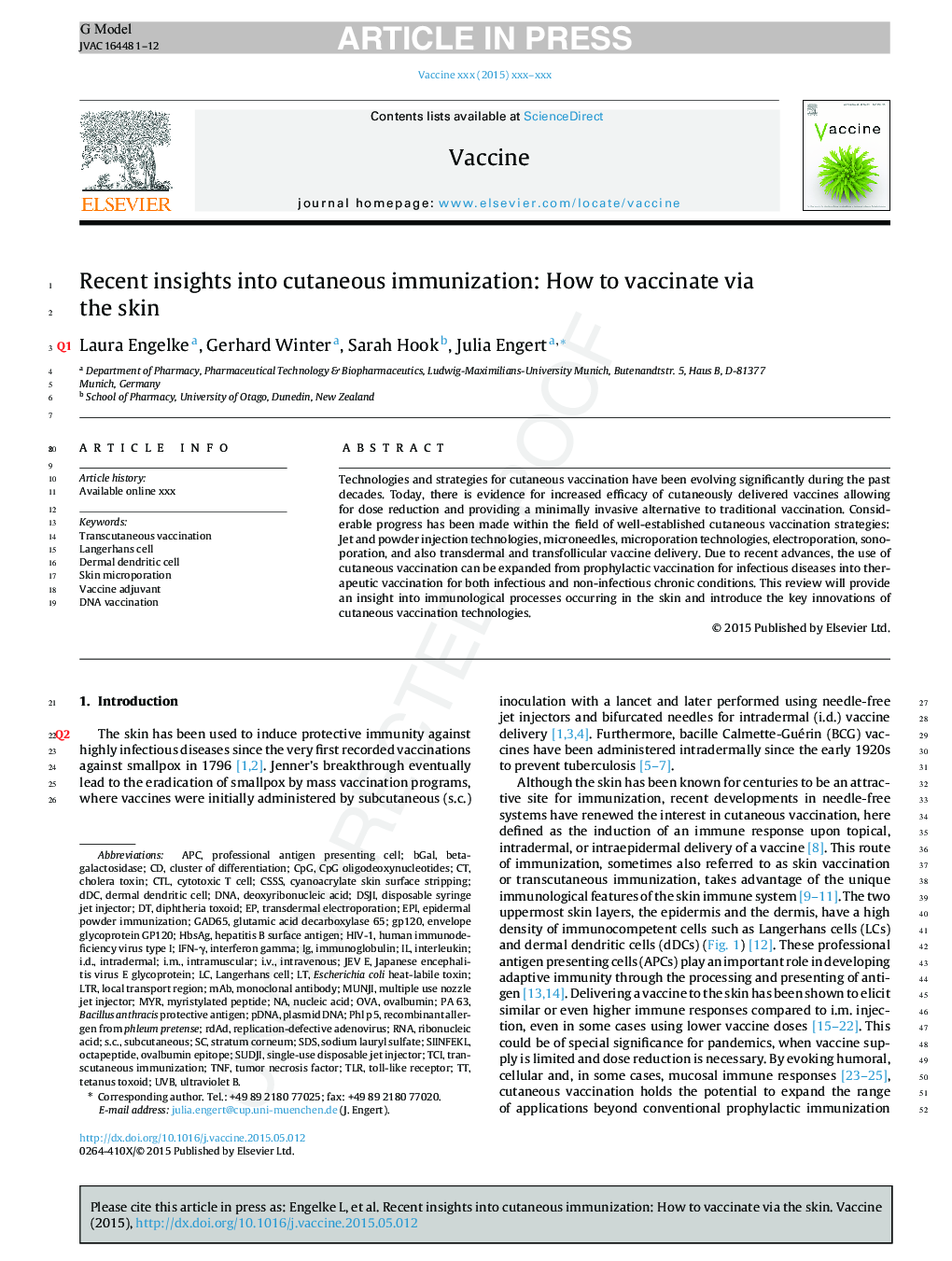| Article ID | Journal | Published Year | Pages | File Type |
|---|---|---|---|---|
| 10964270 | Vaccine | 2015 | 12 Pages |
Abstract
Technologies and strategies for cutaneous vaccination have been evolving significantly during the past decades. Today, there is evidence for increased efficacy of cutaneously delivered vaccines allowing for dose reduction and providing a minimally invasive alternative to traditional vaccination. Considerable progress has been made within the field of well-established cutaneous vaccination strategies: Jet and powder injection technologies, microneedles, microporation technologies, electroporation, sonoporation, and also transdermal and transfollicular vaccine delivery. Due to recent advances, the use of cutaneous vaccination can be expanded from prophylactic vaccination for infectious diseases into therapeutic vaccination for both infectious and non-infectious chronic conditions. This review will provide an insight into immunological processes occurring in the skin and introduce the key innovations of cutaneous vaccination technologies.
Keywords
gp120OVAAPCLTRCpGEPIDSJIIFN-γintradermalCSSSTLRHBsAgTCIGAD65i.v.s.c.glutamic acid decarboxylase 65pDNAEnvelope glycoprotein gp120Phl p 5human immunodeficiency virus type IUVBTNFbGalCTLmAbSDSddCDNACpG oligodeoxynucleotidesMonoclonal antibodyHepatitis B surface antigendeoxyribonucleic acidribonucleic acidRNANucleic Acidultraviolet BOvalbuminTranscutaneous immunizationEpidermal powder immunizationimmunoglobulin interleukinbeta-galactosidasediphtheria toxoidtetanus toxoidToll-like receptorcluster of differentiationIntravenousVaccine adjuvantsubcutaneoussodium lauryl sulfateCytotoxic T cellDermal dendritic cellLangerhans cellcholera toxini.d.Intramusculartumor necrosis factorStratum corneumi.m.MyrDNA vaccinationTranscutaneous vaccinationHIV-1Plasmid DNAInterferon gamma
Related Topics
Life Sciences
Immunology and Microbiology
Immunology
Authors
Laura Engelke, Gerhard Winter, Sarah Hook, Julia Engert,
